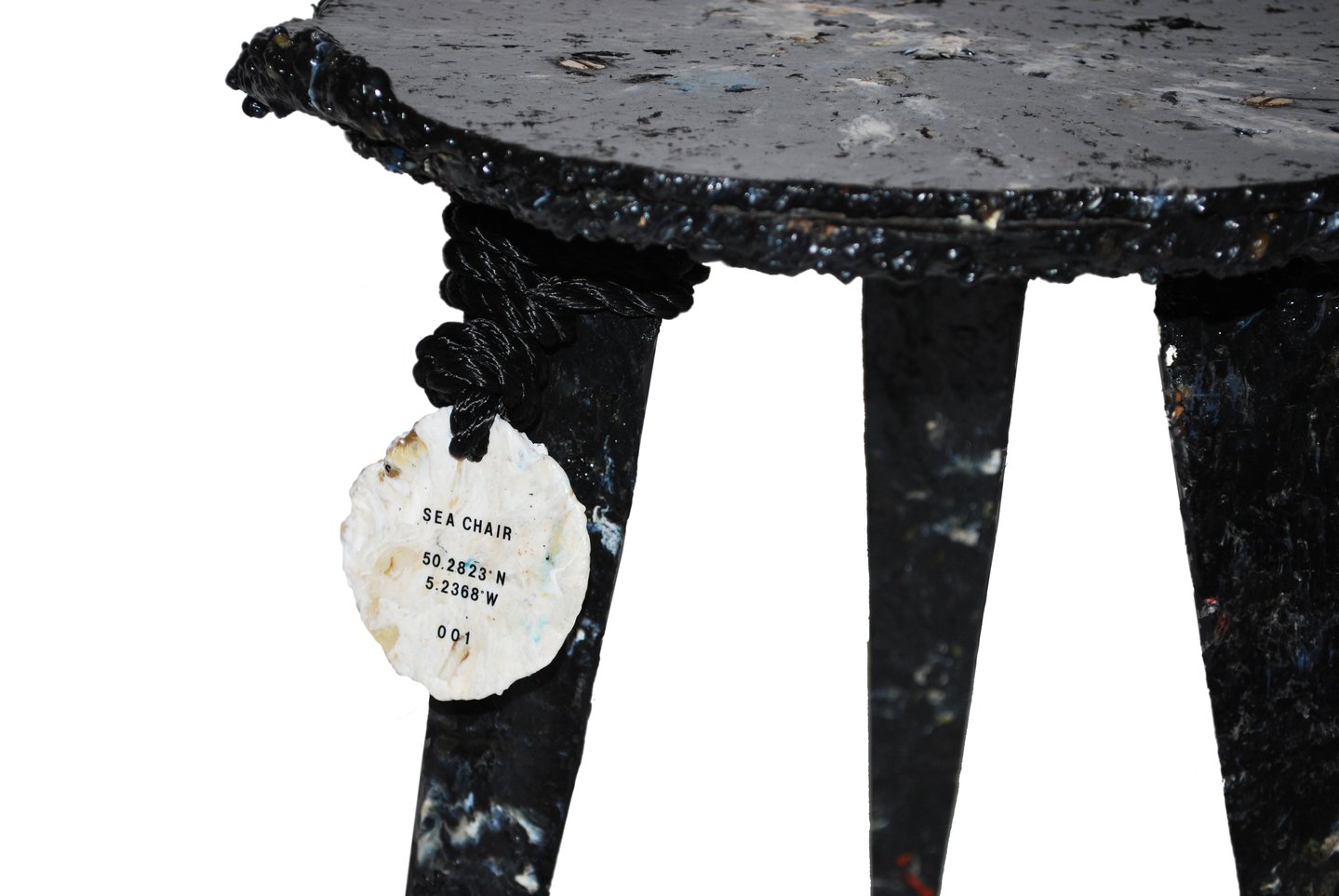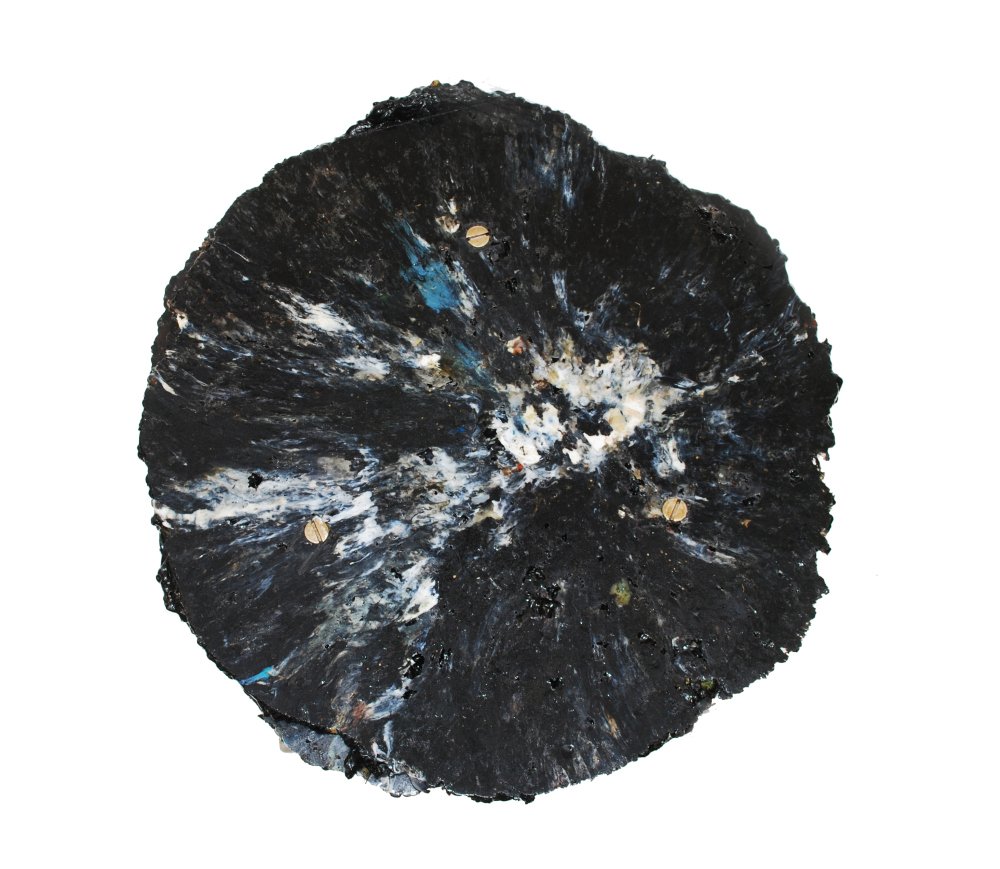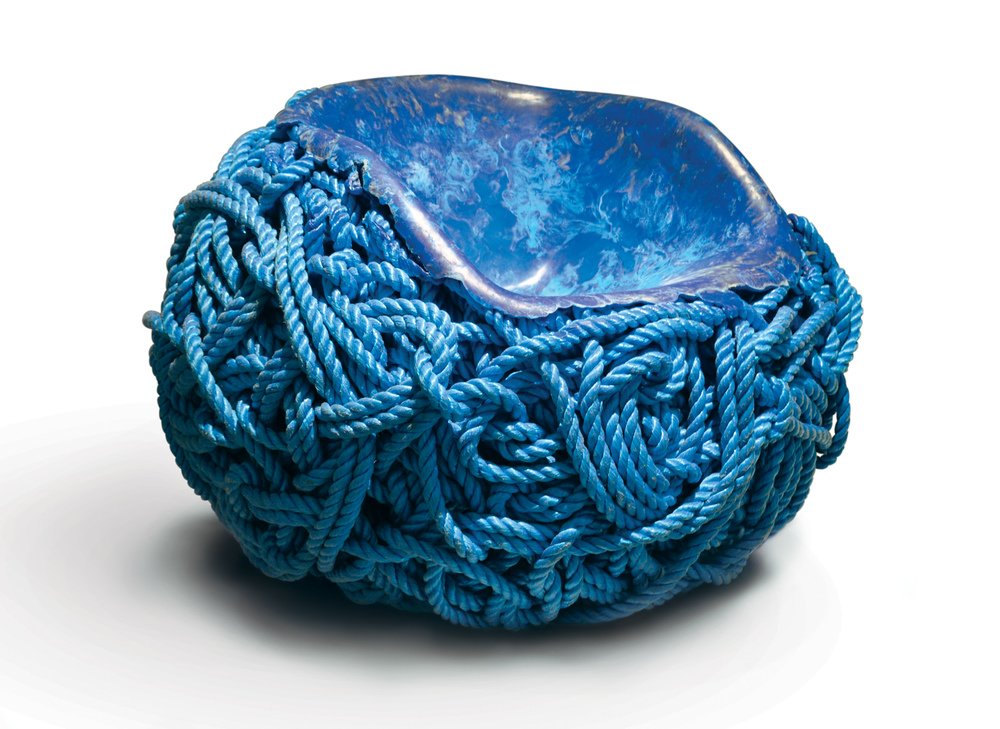
Every now and then a new material arises as if out of nowhere. As humans have developed, so have materials – a high proportion of which have actually been conceived and created directly by us.
The same cannot completely be said of one of the newer material discoveries found on Hawaiian beaches today. But having said that, it cannot be said that the aptly named Plastiglomerates are a completely natural phenomena either.
They are an indirect human creation but one that is spurred on, much like the stone that makes up the earth’s surface, by heat and pressure.
The material is in fact composed of a conglomerate mix of raw and man-made substances formed from human plastic debris, sand and rocks found on beaches. It’s believed that extreme heat, most likely from beach bonfires; meld the materials together, changing their physical state to create a whole new and singular material.

This amazing discovery put me in mind of a number of other interesting design pieces…
One such example, which was inadvertently created at the beginning of the last century, but which did not find a real-life application until this, is the incredible and beguiling Aerogel . It actually has the attributes of a gel, but one in which the liquid content has been replaced by gas, making it incredibly lightweight and yet at the same time very strong and sturdy as well as porous and a good thermal insulator. It took NASA to find a purpose for it – it’s now used to collect stardust in outer space.
Marmoreal on the other hand is an engineered marble created by designer Max Lamb. Having worked extensively with stone for some time, the material came about from Lamb’s intrigue into how the inherent visual qualities of the stone aggregate itself, can be magnified above that of standard Terrazzo manufacturing methods. Bringing together large chips of four Veronese marbles for the final recipe; Rosso Verona, Giallo Mori, Verde Alpi and Bianco Verona with polyester resin, Lamb’s material is a beautiful mix of greens, reds and yellows on a cream background making it visually exciting on every viewing.
Solid Wool is also a well-considered mix of materials with a strong sense of place and sustainability, making up the narrative backdrop to the material’s story. Conceived in a small British town with a tradition of, but decline in sheep farming, the design team set about utilising and reinvigorating the shearing of sheep to create a new solid surface that is a mix of wool with bio-resins (as apposed to the standard petrochemical polymers). The material, like many polymers we interact with daily, is tough yet thermoformable, making it the perfect alternative.

When it comes to melting polymers to create new melded objects and surfaces there are few who have done it with more fascination, enthusiasm and cunning than British designer Tom Price . His Meltdown series re-appropriates all kinds of plastics to create new, solid chair-shaped compositions ranging from clothes and rope to plastic tubing, subtly elevating them above their usual utilitarian status with that of a new more exciting and unexpected usage.
One project that seems most befitting following the discovery of Plastiglomerates is that of Swine, who came up with the Sea Chair Project in 2012. It came about as a response to the continuing discovery of new ‘pacific garbage patches’, which were first found in the middle of the ocean in 1997. These huge, landmass sized flotsam and jetsam blobs are made almost entirely of human plastic waste and are continuing to grow. With the assistance of fishermen, Swine set about recovering plastic waste from the ocean and reconstituting it into useful stools. Not quite a brand new material but certainly a fantastic way of reversing negative human impact upon our oceans and who knows, possibly the future eradicator of another material – the man-made (and let’s be honest, not the prettiest) Plastiglomerate.
Images: Tom Price & The Sea Chair